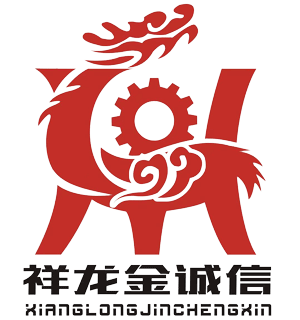How does an extrusion blow molding machine work in packaging?
How Does an Extrusion Blow Molding Machine Work in regards to packaging?
What an Extrusion Blow Molding Machine Contains In Terms of Packaging
An extrusion blow molding machine will have some critical elements. The first of these parts is an extruder. The extruder receives some plastic raw materials most of which come as pellets. These pellets are inserted via a hopper on to a rotating screw. The rotating screw will heat and melt the plastic. The heating system which is built around the extruder barrel makes sure the correct temperature is maintained to melt the plastic.
Once the plastic has been melted and is in a molten state it is then pushed through a die. The die is a type of tool which will shape the molten plastic in to a tube form which is referred to as a parison. The parison is the first stage of the packaging product. It is essential that the die determines the size and thickness of the parison as that will have a major impact on the quality on the parison once the packaging has been finished.
The mold is considered another critical part. The mold has two parts which allow the mold to open and close. It is constructed to the shape of what the desired packaging will be, which can include bottles or containers. When a parison has been extruded, the mold will close around it which will allow the parison to be secured.
An equally important part is an air injection system.
The inside of the parison contains an air needle which injects the compressed air causing the parison to expand in size. The Pressurized parison then flows to the inner walls of the mold taking its shape. The shape of the mold is now acquired by the parison.

Extrusion Blow Molding Machine in Packaging
The workings of an extrusion blow molding machine when it comes to packaging is a step by step process. The first step is the extruder which begins by melting and extruding the plastic. The plastic pellets are moved to the extruder hopper where the molten plastic is created. Upon reaching the molten state, the plastic is now in a state where it can be melted and heated. At this stage, it is passed through the die to create a parison. The parison is hanging from the die, getting ready to be worked on.
The next step is the mold stage where the the parison is now ready to be moved and extruded. The parison is now ready and kept to the set length. The mold closes and moves toward the bottom parison while simultaneously clamping on to the. The top parison. The parison is tightly held, while the excess plastic is cut from the top and bottom. The cut excess plastic can be recycled at anytime.
The next stage of the process is now air injection and parison expansion.
After closing the mold, the air needle penetrates the parison which is then injected with compressed air. Due to the air pressure, the parison stretches and when doing so, touches the inner wall of the mold. Since the mold’s inner shape is copied to the parison, the latter takes on the form of the former’s cavity which is the desired shape of the packaging product.
Next comes the stage of cooling and solidification. Normally, a mold contains a cooling system with water channels. Water within these channels cools down the plastic by intercepting the heat exuded by the molten form. The serpentine shape of the channels ensures a lower volume of water is used in comparison to a single chamber system, thus cooling the mold rapidly. During cooling, if charges in the time cycle are made, i.e, if the time is set too low, the plastic does not cool down and solidifies which in turn makes the packaging deforms when the mold is opened. Conversely, setting the cycle too long, does not allow the production of the system to work efficiently.
The last stage is that of mold opening and product ejection. The mold is ejected first and the pack is also ejected. The pack is completed with the system of the plastic and other.A conveyor belt or robotic arm carries away the product for additional operations, such as trimming or labeling.
Benefits of Extrusion Blow Molding Machine in Production of Packaging
Used in the production of packaging, extrusion blow molding machines have their own set of advantages. One of the advantages is the ability of the machines to create different shapes and sizes of packaging. The machines can create small bottles used to pack cosmetics, and by simply changing the mold, also large containers that hold industrial chemicals. This ability makes the machines suitable for the different packaging requirements of different sectors.
In addition to being able to create different shapes and sizes, the machines also have high production efficiency. The machines have the capability to work continuously, producing several packaging products in a limited span of time. The plastic is melted and the product is ejected in an automated manner. Less manual operations also means that the production speed is high and human errors are also avoided. The high efficiency of the machines greatly assists in meeting the large demand for packaging in the market.
To add on, the machines also ensure packaging of a high quality. The uniform package also contains high quality due to the packaging being smooth, and of a consistent thickness. The quality is ensured by the careful management of the extruder temperature and the air pressure while being injected.
The cooling system in the mold helps packs to become strongly solidified which makes them tough. This helps to avoid leaks for liquid products. This is one of the qualities needed in the packaging to defend the contents inside. In addition, extrusion blow molding machines is economical as it uses different kinds of plastic, including those which have been used, thus lowering the environmental impact raw materials. It is also automated which helps in lowering labor as well. The molds used in machines also have short life span which helps in lowering production costs even more.
Common Applications of Extrusion Blow Molding Machine in the Packaging Industry
The packaging industry has continued to utilize extrusion blow molding machines. One of the uses is in the making of plastic bottles. These plastic bottles receive drinking water, soft drinks, juices, and even cooking oil. These machines can make plastic bottles of various sizes, starting from 500ml to 5 liters and even more. These bottles have a lightweight design and very good sealed. This helps to keep the contents fresh and avoids contamination.
Another use which is common is the making of plastic boxes. These boxes are primarily used for storing food and food products such as snacks, cereals, and even frozen foods.
Detergents, shampoos, and cosmetics are also catered to. For easy handling, the containers can be fitted with various types of handles or lids. They are also designed to be easily used. To defend the containers during storage or shipping, the extrusion blow molding process makes the containers strong.
These machines also make plastic barrels and drums. These large industrial containers are used to hold oils, lubricants, and chemicals. Since the drums and barrels are thick-walled, they are impact resistant, durable, and withstand chemicals. They also possess a strong chemical barrier to protect the contents from the plastic.
Plastic extrusion blow molding machines are also used to make plastic tubes. These tubes hold ointments, toothpaste, and glue. The tubes are also specially designed to let the contents easily be squeezed out. In order to satisfy different product specifications, the machines are designed to create tubes of many different sizes.





